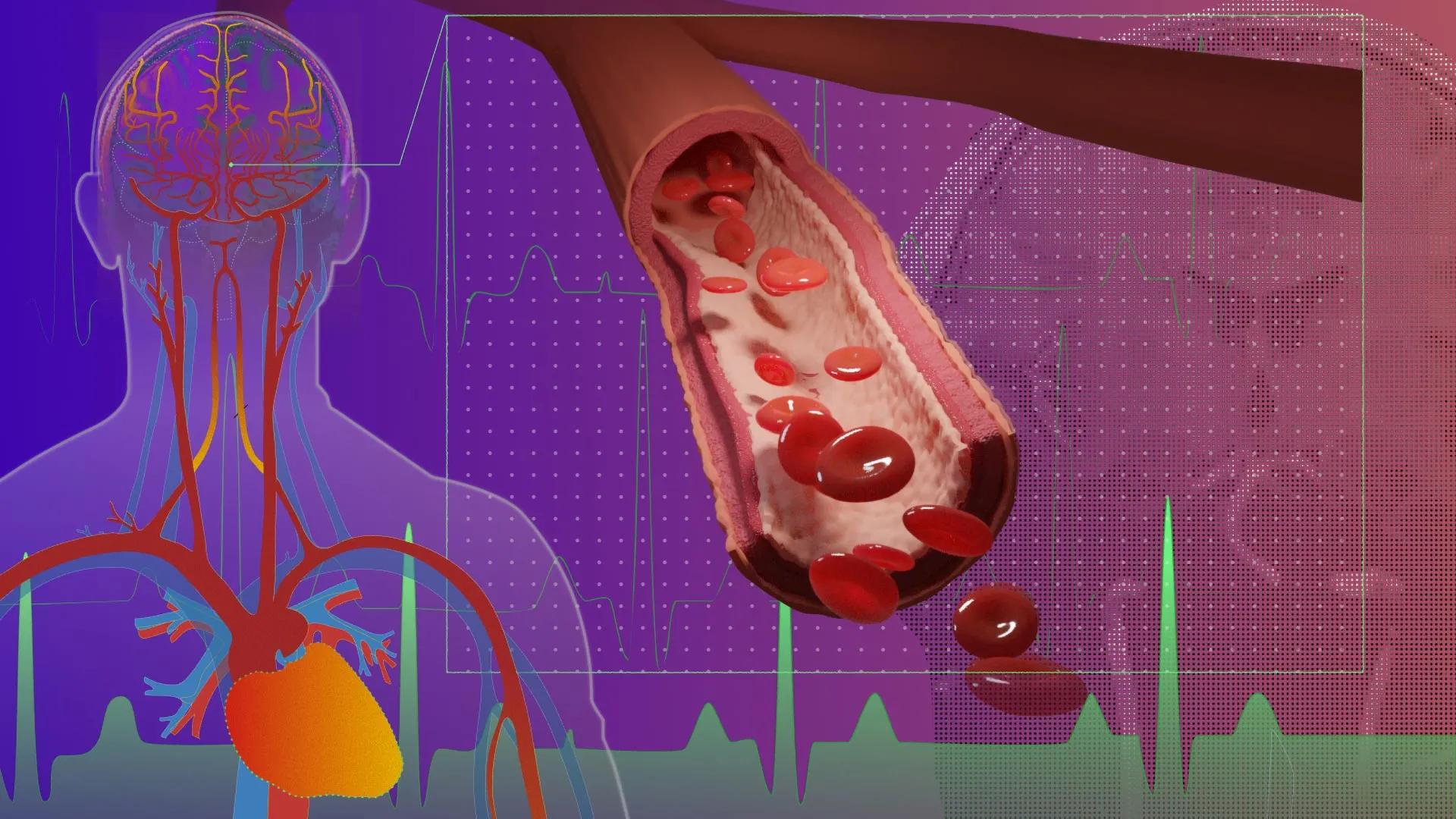
Restoring cellular memory blocks cancer cells from adapting to escape treatment.
Northwestern University biomedical engineers have developed a completely new approach to cancer therapy that doubled the effectiveness of chemotherapy in animal studies.
Rather than focusing on directly killing cancer cells, this pioneering method stops the cells from adapting in ways that allow them to resist treatment. By blocking this evolutionary escape route, the disease becomes more vulnerable to drugs already in use. The strategy not only nearly eliminated cancer in cell cultures but also greatly enhanced the impact of chemotherapy in mouse models of human ovarian cancer.
The study was published in the Proceedings of the National Academy of Sciences.
“Cancer cells are great adapters,” said Northwestern’s Vadim Backman, who led the study. “They can adapt to almost anything that’s thrown at them. First, they learn to evade the immune system. Then, they learn how to adapt to chemotherapy, immunotherapy, and radiation. When they resist these treatments, they live longer and acquire mutations. We did not set out to directly kill cancer cells. We wanted to take away their superpower — removing their inherent abilities to adapt, to change, and to evade.”
Backman is the Sachs Family Professor Biomedical Engineering and Medicine at Northwestern’s McCormick School of Engineering, where he directs the Center for Physical Genomics and Engineering. He also is a member of the Robert H. Lurie Comprehensive Cancer Center at Northwestern University, the Chemistry of Life Processes Institute and the International Institute for Nanotechnology.
Chromatin is key to cancer’s survival
Cancer displays many unique characteristics, but its defining trait is its extraordinary capacity to survive. Even under attack from the immune system or aggressive medical therapies, tumors may shrink or slow down, yet they rarely vanish entirely. While genetic mutations contribute to this resilience, they occur too gradually to fully explain how quickly cancer cells adapt.
Backman and his team uncovered a central mechanism behind this phenomenon. They found that the structural organization of chromatin—the complex of DNA, RNA, and proteins—governs cancer’s adaptability and survival against powerful drugs.
Chromatin serves as the framework that determines which genes are active and which remain suppressed. Because nearly two meters of DNA must be compressed into a cell nucleus only one hundredth of a millimeter wide, chromatin is densely compacted.
By combining imaging, computer simulations, systems modeling, and live-animal experiments, the researchers revealed that the three-dimensional layout of chromatin not only controls gene expression and stress responses but also encodes a kind of memory of transcriptional activity within its packing geometry.
This 3D arrangement functions much like a self-learning algorithm, constantly reorganizing into thousands of nanoscopic chromatin packing domains. Each domain preserves a piece of transcriptional memory that guides how a cell behaves. Over time, these domains are shaped and reshaped by cellular experiences, reinforced, stored, and rewritten. When this system goes awry, it can contribute to cancer, Alzheimer’s disease, and even the process of aging.
In cancer specifically, disrupted chromatin packing gives cells greater plasticity, meaning they can more readily adapt and ultimately learn to resist therapies such as chemotherapy.
Reprogramming chromatin to boost chemotherapy
In their latest research, Backman and his colleagues created a computational model grounded in physics to examine how chromatin organization affects a cancer cell’s likelihood of surviving chemotherapy. When they applied the model across different cancer cell types and multiple classes of chemotherapy drugs, it successfully predicted survival outcomes even before treatment began.
Recognizing that chromatin structure plays a central role in cancer cell persistence, the researchers explored what would happen if they deliberately modified that structure. Rather than designing entirely new medications, they screened hundreds of existing drug compounds to identify those capable of reshaping the nuclear environment in a way that influences chromatin packing. From this effort, they identified celecoxib, an FDA-approved anti-inflammatory medication already in clinical use. Commonly prescribed for conditions such as arthritis and certain cardiovascular issues, celecoxib also happens to affect chromatin packing — a property that made it a strong candidate for further testing.

“Several drugs, including celecoxib, can regulate chromatin and repress plasticity,” Backman said. “With this approach, we now can design strategies that synergize with chemotherapy or other existing therapies. The important finding is the concept itself. This particular drug just proves the point.”
“This study opens up novel therapeutic avenues to treat cancer that can supplement existing treatments,” said Rachel Ye, a graduate student in Backman’s laboratory. “It is exciting to see how we are unraveling the mysteries of genome organization through multidisciplinary approaches, and this paper is a strong result of that effort.”
Experimental results
According to Backman, celecoxib and similar drugs could become a new class of compounds, called Transcriptional Plasticity Regulators (TPRs), designed to modulate chromatin conformation to prevent cancer cells’ adaptive abilities. The researchers found that combining celecoxib with standard chemotherapy caused a substantial increase in the number of cancer cells that died.
After proving its effectiveness in cellular cultures, Backman and his team wanted to demonstrate its potential in a more realistic biological system. The team combined paclitaxel (a common chemotherapy drug) with celecoxib in a mouse model of ovarian cancer. The experiments revealed that the combination reduced the cancer cells’ adaptation rates and improved the inhibition of tumor growth — outperforming paclitaxel alone.
“The animal model that we used has incredible predictive power for what happens in humans,” Backman said. “When we treated them with a low dose of chemotherapy, the tumors continued to grow. But, as soon as we combined the chemotherapy with the TPR candidate, we saw much more significant inhibition. It doubled the efficacy.”
By making chemotherapy more effective, the new strategy potentially could also enable physicians to prescribe lower doses of chemotherapy for their patients. Lower, yet still effective, doses could reduce the burden of chemotherapy’s infamously difficult side effects. That would mark a significant improvement in patients’ overall comfort and experience during cancer treatment.
“Chemotherapy can be so hard on the body,” Backman said. “A lot of patients, quite understandably, sometimes choose to forego chemotherapy. They don’t want to suffer in order to live a few months longer. Maybe reducing that suffering would change the equation.”
Future directions for other diseases
Backman only has focused on cancer so far, but he thinks modulating chromatin conformation might be the key to treating various complex diseases, including heart disease, neurodegenerative diseases and more. Although most cells in a multicellular organism share the exact same genome, there are hundreds of cell types such as bone, neurons, skin, heart tissue, blood and so on. Understanding the physical rules governing how so many different types of cells, with such different functions, can result from the same instruction set is crucial; the conformation of chromatin and the cellular transcriptional memory are what allow all of these different cell types to “remember” which genes to express in order to perform their particular cellular function properly and to work coherently with the cells around them.
Backman posits that some complex diseases, rather than being caused entirely by genetic mutations, may be rooted both in mutations and in cells’ losing their correct transcriptional memories. The loss of a cell type-specific transcriptional lineage in neurons has been associated with early stage neurodegeneration, for example. Cells can also forget which genes to express for normal function when they undergo stress, and that incorrect expression may then become written into the cellular memory, leading to loss of cell function or even disease. Reprogramming chromatin conformation could help restore cells’ correct memories, potentially enabling them to return to a normal state.
“In many diseases, cells forget what they should be doing,” Backman said. “Many impactful diseases of the 21st century are, to a large extent, related to cell memory. Each cell in our body has several thousand chromatin domains, which are actual physical elements of transcriptional memory. The computational complexity that happens in every single cell is equivalent to a 1984 Apple computer. Cells maintain memory for a long time, but they can also develop spurious memories or lose memories. Cancer cells take that to the extreme. I think what we have found here is the source code of cell memory.”
Reference: “Leveraging chromatin packing domains to target chemoevasion in vivo” by Jane Frederick, Ranya K. A. Virk, I Chae Ye, Luay M. Almassalha, Greta M. Wodarcyk, David VanDerway, Ruyi Gong, Cody L. Dunton, Tiffany Kuo, Karla I. Medina, Margarita Loxas, Jared T. Ahrendsen, Demirkan B. Gursel, Paola Carrillo Gonzalez, Rikkert J. Nap, Saira John, Vasundhara Agrawal, Nicholas M. Anthony, John Carinato, Wing Shun Li, Rivaan Kakkaramadam, Surbhi Jain, Shohreh Shahabi, Guillermo A. Ameer, Igal G. Szleifer and Vadim Backman, 22 July 2025, Proceedings of the National Academy of Sciences.
DOI: 10.1073/pnas.2425319122
Supported from the National Institutes of Health (grant numbers U54CA268084, U54CA193419, R01CA228272, R01CA225002, R01CA155284, R01CA165309, T32GM132604, T32GM008152 and T32HL076139), National Science Foundation (grant numbers EFMA-1830961, EFMA-1830968, EFMA-1830969, CBET-1249311, EFRI-1240416, DGE-0824162 and DGE-184216), the Lefkovsky Innovation Award and the Chicago Biomedical Consortium with support from the Searle Funds at The Chicago Community Trus
Never miss a breakthrough: Join the SciTechDaily newsletter.
Source link


